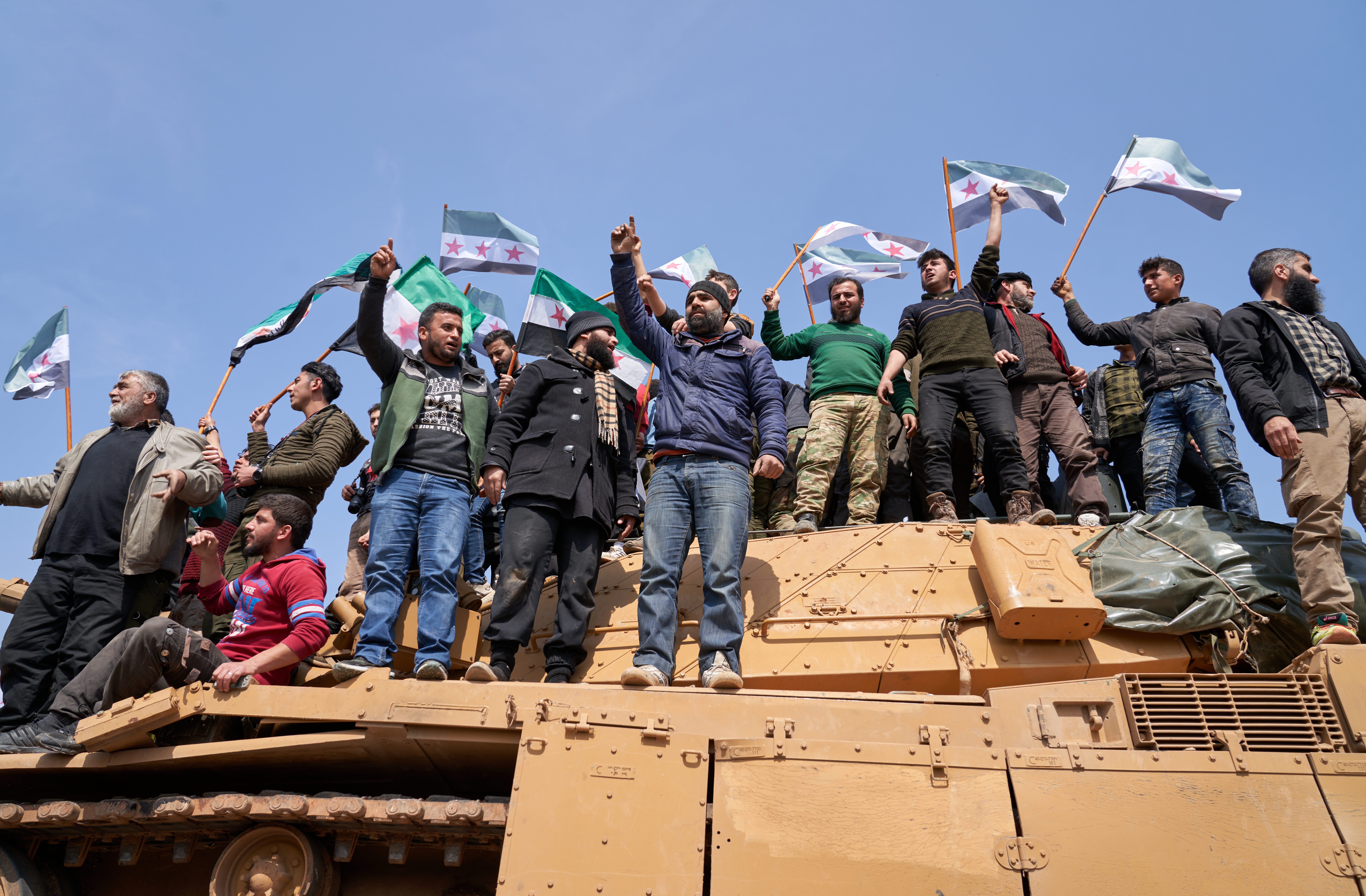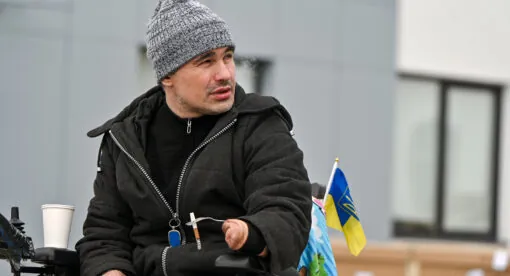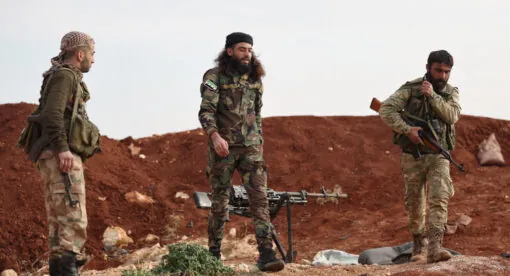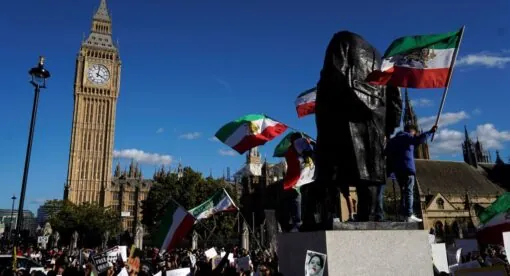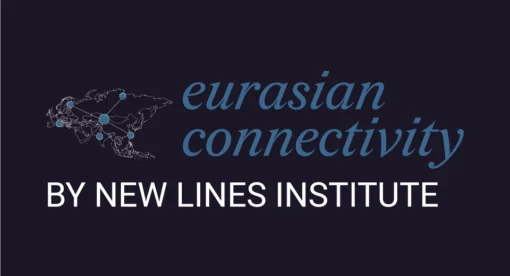
*Mapping done using Google Maps/Google Earth tool
Opposition-held Idlib continues to experience a massive humanitarian crisis that is unlikely to abate any time soon, despite the current Turkish-Russian brokered cease-fire. Around 3.5 million people are trapped in an ever-shrinking piece of territory with no consistent access to food, water, shelter, healthcare, or education services. They cannot subsist in this space, even if the airstrikes and bombings end permanently. The international community cannot supply enough humanitarian aid and services to keep such a large population alive over the long term. It will only be a matter of time before people in this enclave decide that it is better to risk finding a way to escape over Turkey’s massive border wall than remain trapped in Idlib. This will precipitate another domestic crisis in Turkey, which will then either open the borders to Europe for an extended period of time to relieve domestic pressure or search for another means of dispersing such a large population, potentially including population transfers to territory Turkey recently seized in northeastern Syria. Either outcome spells disaster for the region and has serious political consequences for Europe and the wider international community.
The United States and the European Union need to negotiate with Turkey, craft a serious strategy that includes providing a semi-permanent safety net in opposition-held Idlib so that the area can stabilize and people feel they can stay in Syria. Failing that, Washington and the EU should help create a mechanism to allow for the evacuation of the enclave to other countries, thus ensuring that the legal concept of the right to leave – which is guaranteed under the 4th Geneva Convention and the Universal Declaration of Human Rights – is upheld.
The current Turkish-Russian cease-fire deal, agreed to on March 5, raises more questions than it answers. In a nutshell, it does not alleviate the humanitarian situation at the Turkish border or result in the regime’s forces retreating to the original 2018 Sochi cease-fire line. The Sochi deal established a demilitarized cease-fire line 15-20 kilometers deep along what were then the front lines between the Syrian opposition and the jihadist Hayat Tahrir al-Shaam (HTS) rebel forces on one side and the Assad regime and its Iranian mobilized proxies on the other. This line stretched from the mountainous regions of northern Latakia through the plains of fertile plains of Hama, snaking along just south of the Hama-Idlib provincial border, and headed back north through Aleppo province, including much of the Atarib district and opposition-held suburbs adjacent to Aleppo city. Additionally, Turkish, Russian, and Iranian observation posts were erected along this cease-fire line to enforce the agreement and keep all sides in check.

*Mapping done using Google Maps/Google Earth tool
The 2018 Sochi deal also stipulated the following points (though it was always hard to see how they would be effectively enforced): “Transit traffic on the routes M4 (Aleppo-Latakia) and M5 (Aleppo-Hama) will be restored by the end of 2018” and “effective measures will be taken for ensuring a sustainable cease-fire arrangement within the Idlib de-escalation area. In this regard, the functions of the Joint Iranian-Russian-Turkish Coordination Center will be enhanced.”
It was clear from the first day that the issue of the M4 and M5 highways would ultimately be the sticking point between Turkey and Russia. Turkey had no ability to guarantee safe transit along the sections of opposition-held M4 and M5 highways due to the omnipresent HTS. Enforcing this provision would have required a full Turkish invasion and direct administration of the greater Idlib pocket, and the dismantling of HTS and other terrorist organizations, which would have required substantive manpower and would likely have led to Turkey’s own humanitarian crisis as civilians fled the fighting.
Furthermore, Russia and the Assad regime’s definition of terrorism incorporates everyone living in the greater northwestern Idlib region, so there was never any real plan to make this agreement a permanent deal; the intention was always to take back the area from opposition hands. By March 2019, Russian and regime warplanes had resumed airstrikes in the province, and the Assad regime launched a ground campaign dubbed “Dawn of Idlib” which focused on taking back opposition-held northern Hama province and adjacent southern Idlib province.
This campaign proved difficult, as Iran did not commit its militias to helping. Instead, Russia’s newly minted 5th Corps took the lead, along with a series of Palestinian and local militias more closely affiliated with the Russian sphere of influence within the regime’s military and security apparatuses. After gaining little through much of spring and early summer, Iranian-backed forces eventually entered the campaign. More targeted Russian bombing resulted in the opposition losing most of northern Hama province, the city of Khan Shaykhun on the Idlib-Hama borderline, and some portions of southeastern Idlib province. This led to the first major wave of displacement which continued until March 2020, resulting in more than a million internally displaced persons (IDPs) being displaced to the Idlib-Turkey border. A brief cease-fire occurred in August 2019, but was quickly broken when Russian and regime airstrikes increased in intensity and frequency throughout September, leading to successive waves of displacement and the subsequent collapse of opposition defensive lines throughout the pocket.
By February 2020, Russian carpet bombing of towns and villages in southern Idlib province had broken the armed opposition and HTS’s ability to defend the area. The Assad regime’s ground forces surged forward, taking control of all sections of Idlib and Aleppo provinces east of the M5 highway. At this point, Turkey attempted to intervene by erecting new observation posts in order to forestall the regime’s advances, sending in thousands of Turkish troops and providing the opposition with additional military equipment and ammunition. While key opposition strongholds such as Maarat Al-Numan fell, Turkish and opposition forces made forceful attempts to maintain control of the town of Saraqib, which sits at the strategic junction where the M4 and M5 highways meet. During this period, evidence of the initial use of man-portable air defense systems (also called MANPADS) in Idlib emerged, including the downing of two regime helicopters. This was seen as a signal from Turkey to Russia that the status quo was unacceptable and that Ankara would not accept Idlib falling to the regime because of the humanitarian crisis it was causing on its border. Saraqib changed hands several times, but ultimately remained in regime control after Russian and/or regime airstrikes killed more than 30 Turkish soldiers on Feb. 27.

*Mapping done using Google Maps/Google Earth tool
After that attack, and seeing the number of IDPs racing toward the border, Turkey responded forcefully with a massive air campaign, using a new tactic of drone swarms (being careful to deconflict with Russian air), which decimated Assad regime ground forces, armor and artillery. According to experts and Syria watchers, the regime lost at least 700 soldiers, three jets, three unmanned aerial vehicles (UAVs), eight helicopters, 135 tanks, 86 artillery pieces and multiple rocket launchers, 77 armored personnel carriers (APCs), nine arms depots, five air defense systems, and 16 anti-tank guided missiles/mortars.
This air campaign effectively halted the Assad regime’s advance, but it did not roll back the gains made over the previous eight months. As of the March 5 summit between Russian President Vladimir Putin and his Turkish counterpart Recep Tayyip Erdoğan, geographic control of the area looked like this:

*Mapping done using Google Maps/Google Earth tool
The major differences between February and March maps are a further loss of territory within Idlib, specifically around the Jabal al-Zawiyah region, including the loss of major opposition strongholds like Kafrnabl and sections of the Sahl al-Ghab plain in upper Hama province.
Additionally, as of this writing, 12 Turkish observation posts which were originally part of the 2018 Sochi agreement or recently erected around Saraqib are now surrounded by regime forces, yet are still manned. The current agreement includes these protocols:
- Cease all military actions along the line of contact in the Idlib de-escalation area starting from 00:001 of March 6, 2020.
- A security corridor will be established 6 kilometers deep to the north and 6kilometers deep to the south from highway M4. The Turkish and Russian defense ministries will agree upon specific parameters of the corridor’s functioning within seven days.
- On March 15, joint Turkish-Russian patrolling will begin along the M4 from the settlement of Trumba (2 kilometers west of Saraqib) to the settlement of Ain al-Hayr.
Based on this agreement, this is what control of the area and the conflict look like:

*Mapping done using Google Maps/Google Earth tool
Many questions remain unanswered, but based on conversations with the IDPs in Idlib one thing is certain: Until there is clarity for implementing the new agreement, the conditions under which the agreement will be enforced, and the protections the Turkish military will give those living in municipalities either within the proposed security corridor or in the opposition-held territory south of the corridor, no one will voluntarily return to these areas. This agreement is very one-sided; it satisfies all of Russia and the Assad regime’s conditions and does little to provide any serious long-term relief to the 3.5 million Syrians trapped in this enclave. The area of land allotted for “living” under this agreement, even if it includes the security corridor and areas south of the M4 highway, is not sufficient to sustain the current population density. It creates a more complex security paradigm which puts the onus of enforcement on Turkey while giving Russia and the Assad regime a free pass in terms of maintaining any future cease-fire obligations.
More importantly for Turkey, the agreement does not provide any incentive or ability to alleviate the humanitarian crisis on its border. It merely helps codify the “Gazafication” of the opposition enclave and ensures the international community will have to agree to a sustained, long-term, expensive emergency humanitarian response which is neither politically nor militarily sustainable for Turkey. It also seems that the management of the security conditions required to make this agreement work will put the Idlib pocket by default, under Turkish administration – something Turkey has resisted for years.
If the United States is interested in preserving its long-term relationship with Turkey, and showing why maintaining ties with NATO is in Turkey’s interest, re-engagement regarding the status of Idlib should occur. The United States (and the EU) needs to do more than simply provide humanitarian aid. Washington and Europe either need to work out a framework supported under international law to allow for the orderly evacuation of the enclave’s 3.5 million people, or find a reasonable framework under which they will commit to supporting Turkey’s military campaign to push the Assad regime back to the 2018 Sochi cease-fire line. While both measures may seem extreme and implausible, the past nine years should have been made abundantly clear that simply attempting to treat the symptoms and not cause of the Syrian conflict does not work. Turkey has shown that a version of a no-fly zone can be instituted, even with the Russian air force present. At minimum Turkey’s drone campaign shows that a ground offensive can be halted, or even reversed, despite Russian air cover. With full backing from the United States, Turkey may feel further empowered to stand up to Russia and draw a clear, hard line in the sand regarding further incursions into the Idlib enclave.
At the moment, absent any serious tangible support from its allies, Turkey seems prepared to give Russia and the Assad regime what they want, ceding nearly 60% of the enclave and allowing the enforcement of the 2018 Sochi deal to lapse. In the meantime, Russia and the Assad regime could benefit from the restoration of economic activities between Latakia and Aleppo cities via the M4 highway and the full use of the M5 highway stretching from Damascus City to Aleppo City – an objective they attempted to achieve via the 2018 Sochi deal. Overall, Russia and the Assad regime have achieved their major objectives while getting Turkey to foot the bill.
Sasha Ghosh-Siminoff is the Executive Director and co-founder of People Demand Change Inc, a socially responsible aid and development startup that focuses on monitoring and evaluation of humanitarian aid and development programing, supporting the capacity of nascent civil society organizations and providing long-term aid and development solutions in the MENA region, including work in Syria, Libya, Yemen, Iraq, Lebanon, Turkey, and Tunisia. The former Executive Director at the Syrian Emergency Task Force and a journalist with Congressional Quarterly, Mr. Ghosh-Siminoff has spent a great deal of time on the ground in Syria. He has given many briefings on Syria to various international institutions and governments, including the United States, Canada, and Germany.
The views expressed in this article are those of the author and not an official policy or position of the Newlines Institute.

